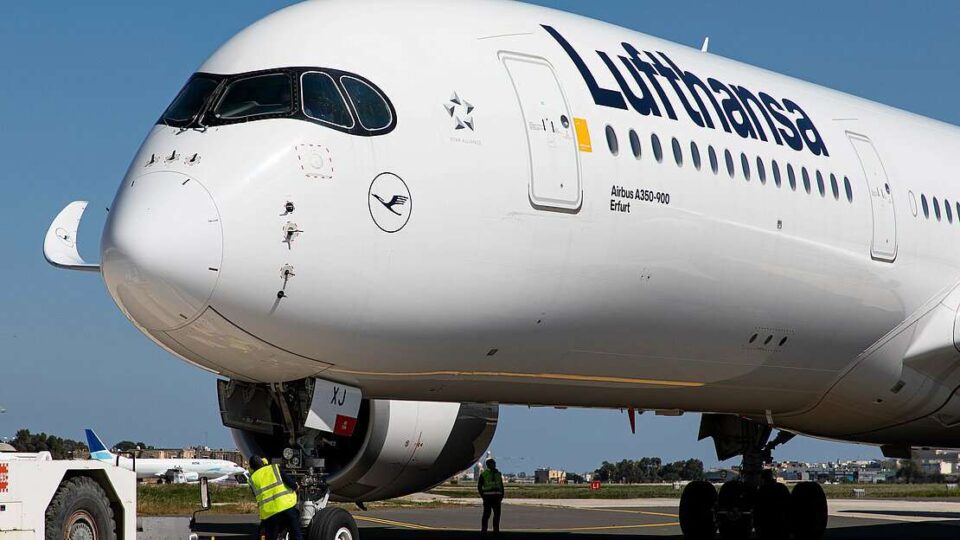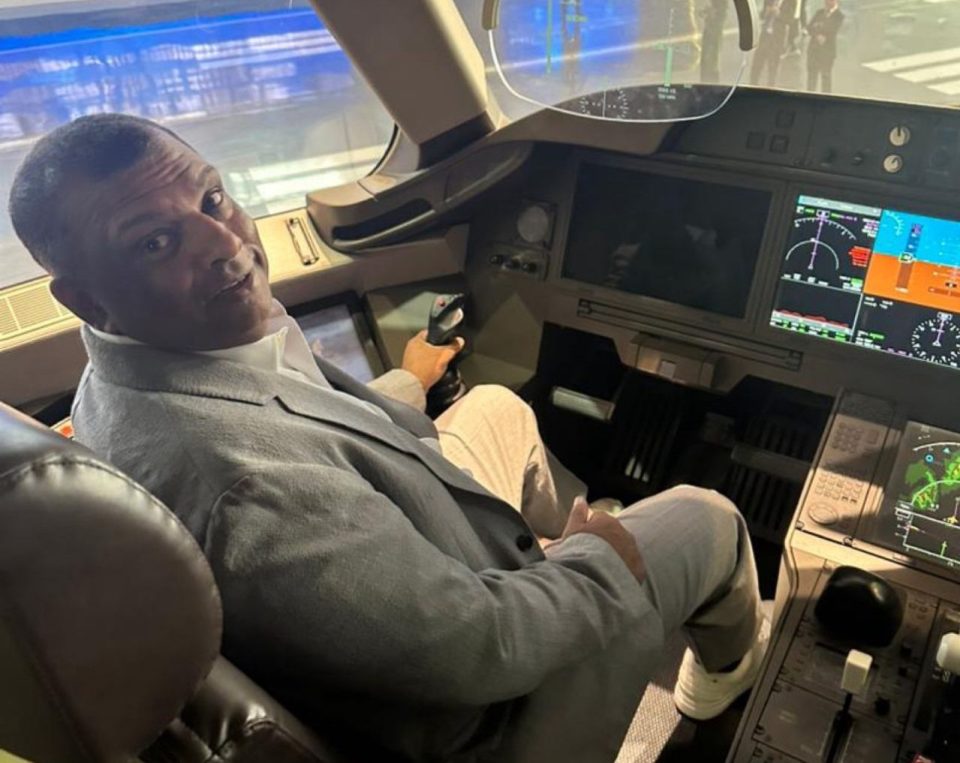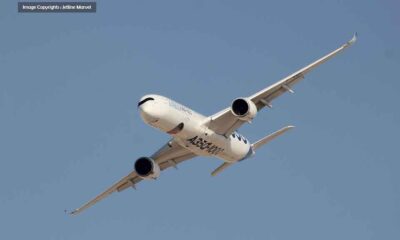Aerospace
Lufthansa orders 22 latest-generation long-haul aircraft with list price of $7.5 billion

- Orders placed for ten Airbus A350-1000s, five Airbus A350-900s, and seven Boeing 787-9s
- Fleet modernization further accelerated / substantial contribution to achieving 2030 carbon emission goals
- Lufthansa Group and Airbus strengthen cooperation on sustainability and future technologies
- Lufthansa Group to take delivery of 108 latest-generation long-haul aircraft over the next few years
- Six older aircraft types to be withdrawn in the medium term including the four-engined Boeing 747-400, Airbus A340-600 and Airbus A340-300
The Lufthansa Group is purchasing more state-of-the-art long-haul aircraft. The Group Executive Board has resolved to order
- ten Airbus A350-1000 passenger aircraft
- five Airbus A350-900 passenger aircraft
- seven Boeing 787-9 ‘Dreamliner’ passenger aircraft
The orders were approved today by the Supervisory Board of the parent company Deutsche Lufthansa AG. The aircraft concerned will be delivered to the Lufthansa Group from the mid-2020s onwards. Based on list prices, the order is worth a total of about 7.5 billion US dollars and is in line with Group’s mid-term financial planning.
With today’s orders included, the Lufthansa Group will take delivery of 108 state-of-the-art long-haul aircraft such as the Airbus A350-1000, the Airbus A350-900, the Boeing 787-9, and the Boeing 777-9 over the next few years. In doing so, the Group will operate the quietest, most profitable, and most economical long-haul aircraft that are currently in service. On average the new aircraft consume just 2.5 liters of fuel per passenger per 100 kilometers – some 30 percent less than their predecessor aircraft types.
The new long-haul aircraft will also replace older aircraft types. In the medium-term future, six such sub fleets will be taken out of service: the four-engined Boeing 747-400s, Airbus A340-600s and Airbus A340-300s and the two-engined Boeing 777-200s, Boeing 767-300s and Airbus A330-200s. This will reduce the quadjet contingent within the Lufthansa Group fleet to under 15 percent: prior to the pandemic, quad jets made up some 50 percent of the groupwide aircraft fleet.
The Airbus A350-1000
The Airbus A350-1000 will be a new addition to the Lufthansa Group fleet. The aircraft is 73.8 meters long and offers some 15 percent more capacity than the Airbus A350-900. The ten A350-1000s on order should primarily be deployed in premium-heavy markets. Therefore all these aircraft will be equipped with a First Class cabin.
The Airbus A350-900
Lufthansa already operates 21 of these aircraft with sizeable success. With the five aircraft ordered today, the Lufthansa Group will now take delivery of 33 further transports of this long-haul aircraft type.
The Boeing 787-9
Three Boeing 787-9s are presently in Lufthansa Group service. With today’s order included, 36 further Boeing 787-9s will join the Group fleet over the next few years.

Aerospace
India is set to build a central command for the Air Traffic Control system, called ISHAN

India’s air traffic growth has led to increased responsibilities for air traffic control. The Airports Authority of India (AAI) is considering centralizing air traffic control for aircraft, dividing the country into four regions. The goal is to consolidate India’s segmented airspace into a single entity to improve air traffic management (ATM) efficiency, safety, and smoothness.
Recently, the AAI invited expressions of interest to develop a detailed project report for the Indian Single Sky Harmonized Air Traffic Management (ISHAN) initiative in Nagpur. Under this plan, air traffic controllers in Nagpur would handle domestic flights flying above 25,000 feet, eliminating the need for coordination among controllers in different regions.
For domestic regional flights operating above 25,000 feet, control would shift to the central command in Nagpur. This consolidation aims to enhance airline operations, increase flight handling capacity, and reduce congestion and flight times for passengers.
Currently, the AAI provides ATM services over Indian airspace and adjoining oceanic areas, covering over 2.8 million square nautical miles. This airspace is divided into four flight information regions (FIRs) in Delhi, Mumbai, Kolkata, and Chennai, along with a sub-FIR in Guwahati.
FIRs are responsible for providing air traffic services, including weather information, visibility, and search and rescue assistance. The proposed unification under the ISHAN initiative aligns with the projected growth of the aviation industry, which anticipates a doubling of domestic passenger traffic by 2030.
Aerospace
Does AirAsia show interest in Comac aircraft in the future?

Tony Fernandes, CEO of Capital A, operating as AirAsia Group, recently paid a visit to the facilities of COMAC on April 2, 2024, and was thoroughly impressed by what he witnessed.
C919 already securing nearly 1000 orders
COMAC, known for its homegrown aircraft, has launched two promising jets: the ARJ21 and the C919 aircraft. Both aircraft are gaining popularity in the Chinese market, with the C919 already securing nearly 1000 orders from various airlines.
Fernandes expressed his admiration for COMAC’s achievements in aircraft manufacturing, acknowledging the immense challenge it entails. His visit underscored the realization that AirAsia now has a viable third option when it comes to selecting aircraft for its fleet.
During his tour, Fernandes was delighted by the innovation and technology evident in COMAC’s aircraft production and the company’s commitment to long-term partnerships.
He noted that many Western companies have shifted away from prioritizing loyalty and customer service, opting instead for short-term gains and a narrow definition of success.
Last month, COMAC embarked on an international tour, showcasing demonstration flights to neighboring countries, particularly Indonesia and Malaysia. Fernandes believes that the positive impression left by COMAC during his visit opens up new opportunities for collaboration.
Fernandes emphasized COMAC’s remarkable achievements
The shared values of loyalty, customer service, and long-term vision align closely with AirAsia’s ethos, making collaboration with COMAC appealing. With a focus on innovation and excellence, both companies stand to benefit from a partnership grounded in trust and a shared commitment to success.
Indonesia and China have already collaborated in validating and maintaining the airworthiness of the ARJ21 aircraft, indicating a solid foundation for future partnerships.
In his statement, Fernandes emphasized COMAC’s remarkable achievements and genuine desire for long-term partnership, highlighting the absence of ego and a genuine willingness to succeed together. He marveled at COMAC’s fully automated, AI-driven factory, a testament to their dedication to innovation and efficiency.
Fernandes criticized Western firms for prioritizing short-term gains over loyalty, customer service, and long-term strategy, emphasizing the importance of understanding customers’ needs and collaborating to achieve success.
Aerospace
Indigo will soon launch Air Taxi Service in India

InterGlobe Enterprises, the parent brand of IndiGo, is set to revolutionize travel in India with its upcoming air taxi service.
Scheduled for a potential launch in 2026, this innovative venture promises a seamless journey for passengers between two bustling hubs. Delhi and Gurgaon in Haryana. The forthcoming service is projected to revolutionize the daily commute, offering passengers a swift aerial journey covering the distance in a mere 7 minutes.
This remarkable efficiency contrasts starkly with the conventional 90-minute drive, underscoring the immense time-saving potential for commuters. The anticipated fare, ranging from Rs 2,000-3,000, makes this innovative mode of transport not only swift but also remarkably competitive in pricing.
At the heart of this ambitious endeavor lies a strategic partnership with Archer Aviation, a pioneer in electric vertical takeoff and landing (eVTOL) aircraft technology. Under this collaboration, Archer will supply 200 state-of-the-art eVTOL aircraft, representing an investment of US$ 1 billion. These cutting-edge aircraft, capable of accommodating up to four passengers alongside the pilot, epitomize the future of sustainable air travel.
Powered by six battery packs, Archer’s eVTOL aircraft boast rapid charging capabilities, enabling a swift turnaround between flights. With a charging time of just 30-40 minutes, these eco-friendly aircraft ensure minimal downtime, maximizing operational efficiency.
Similar services are anticipated to be introduced by the joint venture in Bengaluru and Mumbai as well. Nevertheless, the service rollout period has not yet been made public by the company. Next year, it is anticipated to get its certification. Following this, the company will start the certification procedure with the Directorate General of Civil Aviation (DGCA).





























